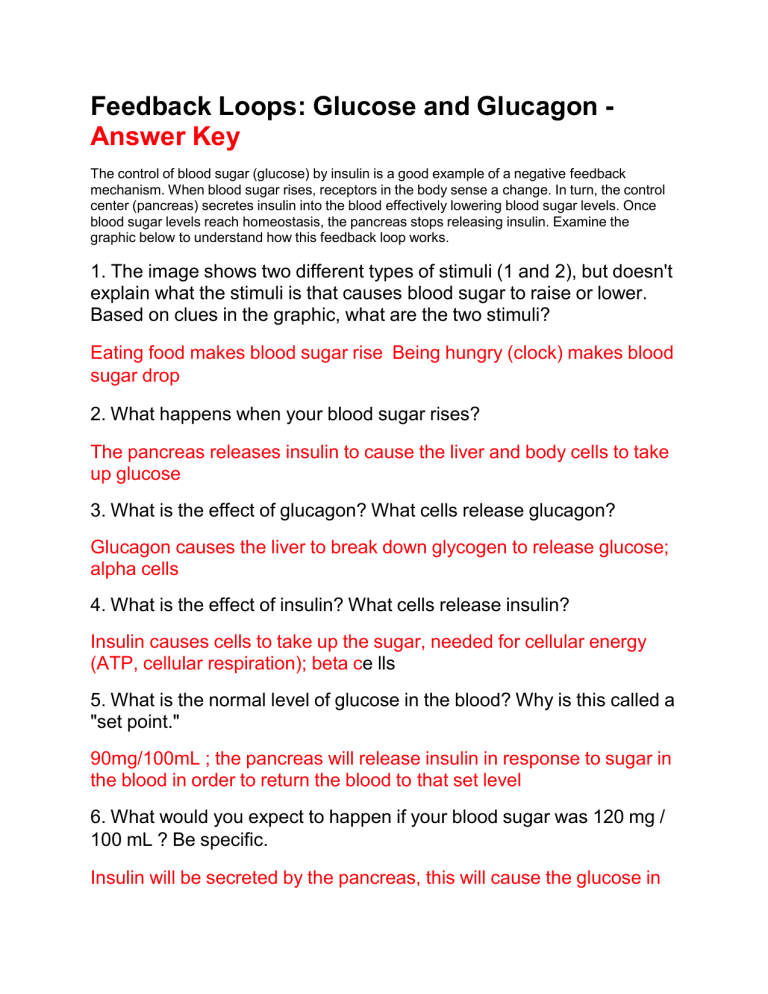
Feedback Loops: Glucose and Glucagon Answer Key The control of blood sugar (glucose) by insulin is a good example of a negative feedback mechanism. When blood sugar rises, receptors in the body sense a change. In turn, the control center (pancreas) secretes insulin into the blood effectively lowering blood sugar levels. Once blood sugar levels reach homeostasis, the pancreas stops releasing insulin. Examine the graphic below to understand how this feedback loop works. 1. The image shows two different types of stimuli (1 and 2), but doesn't explain what the stimuli is that causes blood sugar to raise or lower. Based on clues in the graphic, what are the two stimuli? Eating food makes blood sugar rise Being hungry (clock) makes blood sugar drop 2. What happens when your blood sugar rises? The pancreas releases insulin to cause the liver and body cells to take up glucose 3. What is the effect of glucagon? What cells release glucagon? Glucagon causes the liver to break down glycogen to release glucose; alpha cells 4. What is the effect of insulin? What cells release insulin? Insulin causes cells to take up the sugar, needed for cellular energy (ATP, cellular respiration); beta ce lls 5. What is the normal level of glucose in the blood? Why is this called a "set point." 90mg/100mL ; the pancreas will release insulin in response to sugar in the blood in order to return the blood to that set level 6. What would you expect to happen if your blood sugar was 120 mg / 100 mL ? Be specific. Insulin will be secreted by the pancreas, this will cause the glucose in the blood to be taken into the liver or into the body cells 7. A person with diabetes cannot regulate their blood sugar, mainly because the pancreas does not release enough insulin. To treat the disease, a person must monitor their blood sugar, if their blood sugar is high, they must take an injection of insulin. How do you think they would need to treat low blood sugar? If they have low blood sugar, they will need to consume foods that are high in sugar, like candy 8. In a single sentence, explain the relationship between the pancreas and homeostasis. The pancreas maintains homeostasis by regulating the level of sugar in the blood. 9. Where does the glucose that is released into the blood ultimately end up (2 places)? body cells, liver 10. Explain how the thermostat in your house uses a negative feedback system to maintain your home's temperature. As the temperature in the house drops, the thermostat will detect this change and send a signal to the furnace to turn on so that the house returns to the temperature it was set at.


